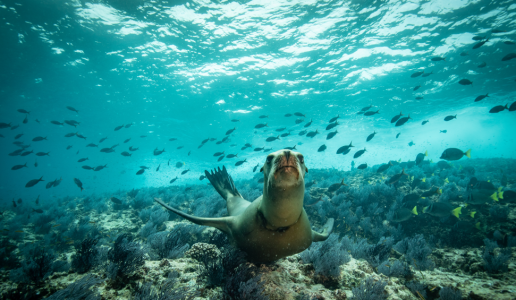Government funding disparities raise concerns over wildlife protection
By
Gian T
- Replies 35
Australia, a nation renowned for its unique and diverse wildlife, faces a threat of 'Titanic' proportions.
The Invasive Species Council has sounded the alarm, likening the country to the ill-fated ocean liner hurtling towards an 'iceberg'—a catastrophic strain of avian influenza that could devastate native species if it reaches Australian shores.
The federal government has allocated $6.9 million for industry preparation and surveillance to combat the threat, but a mere $580,000 has been announced to fund the wildlife response.
This disparity in funding has raised eyebrows and concerns among conservationists and experts, given the potential for the highly virulent HPAI strain to wreak havoc on Australia's iconic animals.
Jack Gough from the Invasive Species Council warned of the impending danger, stating, 'This could be the worst ever single disaster for Australia’s wildlife.'
The virus is expected to arrive soon, and the nation's Threatened Species Commissioner, Dr Fiona Fraser, echoed this sentiment.
The impact could surpass the devastation of the 2019/2020 Black Summer Bushfires.
The HPAI H5N1 strain has already left its mark globally, sparing no region except Oceania.
A 2023 study highlighted the virus's impact on 356 species, a figure that is likely underestimated.
The consequences have been dire, with mass mortalities, such as the 40 per cent loss of pelicans in Peru within just two months.
Australia's track record of combating avian influenza has succeeded in agriculture.
Still, the concern lies with the country's native species, which may have little immunity against the virus.
The arrival of migratory birds in the spring or summer could be the harbinger of this disease.
It could pose a significant threat to the over 2,200 species already on the brink of extinction.
The Invasive Species Council has been vocal about the need for increased government funding to protect wildlife.
It drew comparisons to the swift allocation of $66 million in 2019 in response to the threat of African swine fever.
Gough criticised the current approach, highlighting a systemic failure to anticipate and prepare for ecological disasters.
‘This is the sort of issue that falls through the cracks.’ he said.
‘The Agriculture Department is focused on the response to chickens, and the Environment Department is not really focused on what's needed. And it didn’t put in a budget bid for serious money.
‘There's a failure in our systems when it comes to horizon scanning for massive ecological potential problems.’
‘We're so focused on managing threats to the Tasmanian devil population right now that we’re not looking ahead to the thing that could wipe them out.’
The Environment Minister Tanya Plibersek's office has acknowledged the issue and plans to meet with environmental ministers to discuss the bird flu threat.
However, Gough fears the government's response may prioritise managing public perception over taking concrete steps to protect the wildlife.
In other news, the Australian Centre for Disease Preparedness has cautioned about the potential arrival of H5N1 bird flu in Australia.
This virus has led to a worldwide pandemic in various animal species, including poultry workers in the United States. You can read more about it here.

What are your views on the government's current response to this looming threat? Let us know in the comments below.
The Invasive Species Council has sounded the alarm, likening the country to the ill-fated ocean liner hurtling towards an 'iceberg'—a catastrophic strain of avian influenza that could devastate native species if it reaches Australian shores.
The federal government has allocated $6.9 million for industry preparation and surveillance to combat the threat, but a mere $580,000 has been announced to fund the wildlife response.
This disparity in funding has raised eyebrows and concerns among conservationists and experts, given the potential for the highly virulent HPAI strain to wreak havoc on Australia's iconic animals.
Jack Gough from the Invasive Species Council warned of the impending danger, stating, 'This could be the worst ever single disaster for Australia’s wildlife.'
The virus is expected to arrive soon, and the nation's Threatened Species Commissioner, Dr Fiona Fraser, echoed this sentiment.
The impact could surpass the devastation of the 2019/2020 Black Summer Bushfires.
The HPAI H5N1 strain has already left its mark globally, sparing no region except Oceania.
A 2023 study highlighted the virus's impact on 356 species, a figure that is likely underestimated.
The consequences have been dire, with mass mortalities, such as the 40 per cent loss of pelicans in Peru within just two months.
Australia's track record of combating avian influenza has succeeded in agriculture.
Still, the concern lies with the country's native species, which may have little immunity against the virus.
The arrival of migratory birds in the spring or summer could be the harbinger of this disease.
It could pose a significant threat to the over 2,200 species already on the brink of extinction.
The Invasive Species Council has been vocal about the need for increased government funding to protect wildlife.
It drew comparisons to the swift allocation of $66 million in 2019 in response to the threat of African swine fever.
Gough criticised the current approach, highlighting a systemic failure to anticipate and prepare for ecological disasters.
‘This is the sort of issue that falls through the cracks.’ he said.
‘The Agriculture Department is focused on the response to chickens, and the Environment Department is not really focused on what's needed. And it didn’t put in a budget bid for serious money.
‘There's a failure in our systems when it comes to horizon scanning for massive ecological potential problems.’
‘We're so focused on managing threats to the Tasmanian devil population right now that we’re not looking ahead to the thing that could wipe them out.’
The Environment Minister Tanya Plibersek's office has acknowledged the issue and plans to meet with environmental ministers to discuss the bird flu threat.
However, Gough fears the government's response may prioritise managing public perception over taking concrete steps to protect the wildlife.
In other news, the Australian Centre for Disease Preparedness has cautioned about the potential arrival of H5N1 bird flu in Australia.
This virus has led to a worldwide pandemic in various animal species, including poultry workers in the United States. You can read more about it here.
Key Takeaways
- There is a looming threat of a devastating strain of avian influenza reaching Australia, which could severely impact the country’s unique wildlife.
- The Invasive Species Council has criticised the Australian government for allocating insufficient funds to protect wildlife despite considerable investments to safeguard the agriculture sector from such diseases.
- Experts warned that native species, already threatened with extinction, could face catastrophic losses if the virus arrives, with little immunity expected among them.
- The Environment Minister’s office has acknowledged the issue and is planning to convene a meeting to discuss the potential bird flu crisis.
What are your views on the government's current response to this looming threat? Let us know in the comments below.








